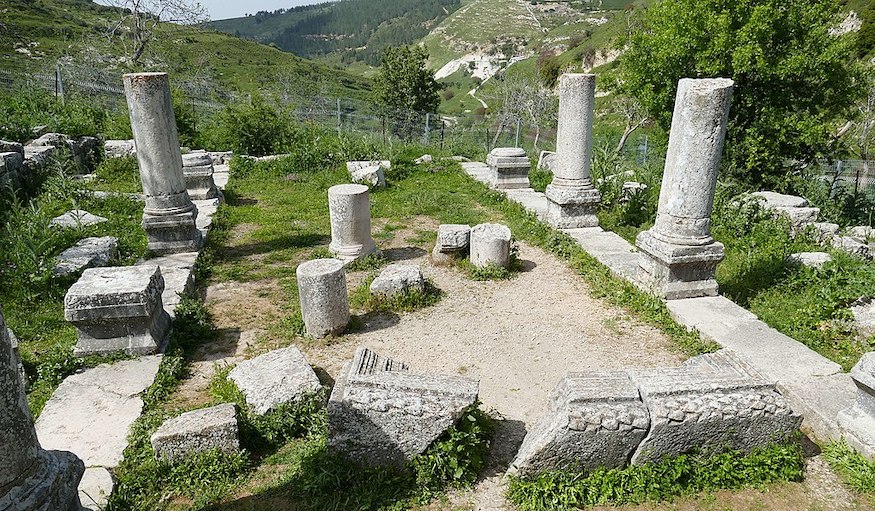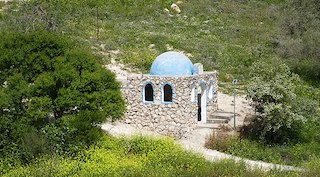The Importance of a Name
There are several ways of trying to ascertain if an ancient site in Israel is the actual place which appears in the Bible or other historical Jewish sources. The first is geographical location. If the source describes a certain place as sitting on top of a mountain, it’s no good conducting archaeological digs on the Mediterranean Coast. The same would be when trying to identify the two-thousand-year-old fishing towns around Lake Kinneret. No matter what sign the Ministry of Tourism puts on roads to lure in the pilgrims, if the place is situated on the slopes of the Golan Heights, far away from, and above sea level, then it is reasonable to assume that it was not a fishing town. Such is the case with Korazin. While the likes of Capernaum today, is the Capernaum of days gone by, the impressive archeological remains at the place identified as Korazin, have nothing to do with the actual Korazin mentioned in the New Testament.
Other tools used to identify sites are ceramics, coins and organic material. Animal bones can be dated with carbon dating, not just to determine their age but which bones they actually are. There have been a few sites where only kosher animals’ bones were found, testifying to early Jewish settlement.
Other ways to identify a site are through diaries and journals. Hundreds of years ago, travelers to the Holy Land kept records of their journeys and offered detailed descriptions of what they saw.
Another hint is to see when people first believed the site to have a certain sanctity about it. Christians often marked crosses on walls, and Jewish people inscribed Menorahs. The earlier this sort of veneration takes place, the more likely the site is authentic.
An interesting piece of the puzzle in all this detective work, is the name of the place.
Thousands of years ago the Galilee and Golan Heights were populated with hundreds of Jewish communities. With the destruction of the Temple the banished Jewish people fled from Jerusalem and headed north. Over time more Jewish communities populated these areas. These demographics changed with the Islamic conquest in the 7th century. Galilee in particular was a favourite dwelling for the Arabs.
“The names of most Arab towns and villages today are Hebrew names pronounced with an Arabic accent”
The former Jewish villages became Arab settlements and the names were changed to Arabic, but astonishingly, the Arabs maintained the Jewish names. One example is the town known by Jews and Arabs today as “Jish.” Jish is the ancient town of Gush Halal, first mentioned by the Jewish historian Josephus. It was the home of one of the great Jewish leaders who took part in the revolt against Rome. Under the Ottomans fifteen hundred years later, there were no Jews in town. Nevertheless, the Arabs preserved the name of the town. With their dialect, the hard G in “Gush” soon became “J”. The “oo” became an “ee” and before you know it, Gush became Jish. That’s how language works. The names of most Arab towns and villages today are Hebrew names pronounced with an Arabic accent.
What is true for the north of Israel is not necessarily true for the south. We know from the Bible that events such as the Exodus, the wanderings in the wilderness and the giving of the Torah took place in specific places in the desert in the south, but we do not know exactly where. Time, weather and erosion destroy much – and sometimes, all – of the evidence: and given the expanse of the desert and the absence of material culture unsuitable for nomads, sometimes we don’t even really know where to look. The lack of physical evidence, causes many a skeptic eyebrow to be raised. However, a lack of physical evidence is not proof that a Biblical event did not happen. A lack of evidence is simply a lack of evidence: it is also an invite to be curious.
The wanderings of the Israelites – according to the borders described in the book of Numbers – could have happened in any of the desert expanse in today’s modern state right up until the northern point of today’s Kibbutz Sde Boker – Ben Gurion’s former home. This would make the region of Beer Sheba today, the Biblical Negev. The area known as the Negev today, is not the Negev of our forefathers. The Negev of Israel today is the wilderness mentioned in the Hebrew Bible.
Ben Gurion was a man who loved the Bible and made it his mission to bring the Bible culture and history into Israeli society. He started by hosting an annual Bible competition on Israel’s Independence Day, a tradition that is kept until today.
Ben Gurion made his mark in other ways. We can thank Ben Gurion for the Hebrew signposts in todays’ Negev which bare biblical names such as Zin, Paran, Eliphaz, and Amram. It was when driving through the desert a year after the War of Independence, that Ben Gurion was struck that no Hebrew names existed for the mountains, riverbeds and rock formations. He wrote in his diary, “we have to give Hebrew names to these places, ancient names if we can, and if not, a modern one.” For this purpose he set up the “Committee for Assigning Hebrew Names in the Negev.” For nearly a year the committee met three times a month. The outcome was that they assigned 561 names to impressive geographical features in the Negev. For the first time in millennia, mountains, valleys, riverbeds, springs, wells and waterholes had Hebrew names.
The names were not randomly chosen. The Bible was the inspiration. The sandstone-lined dry river bed in the Western Arava which the Arabs had named “Seil Imram” (the Channel of wool makers) became in Hebrew the similar sounding “Nachal Amram” after Amram, the father of Moses. Ben Gurion who was no chauvinist, knew it was important to honour the women as well. A black granite mound at the entrance to the riverbed he named “Givat Yocheved” (Yocheved’s Hill) after Moses’ mother.
“The names were not randomly chosen. The Bible was the inspiration”
After the committee completed its initial work, Ben Gurion instructed all the new government ministries in the fledgeling State of Israel to use only these new Hebrew names in all and every official correspondence. This was only the beginning of reclaiming back the historic homeland. As more and more old Tells were dug up revealing ancient sites, new villages, kibbutzim, towns and moshavs began to appear beside them. They were named after the historic remains close by. In the seventy-five years since the birth of modern Israel, the committee has given Hebrew names to over 7,000 new Jewish communities and geographical features in the country. Whether the location is authentic or not, is somehow neither here nor there. The renaming of places with Biblical names sparked an interest in history and continuity of the return of the Jewish people to their native homeland.






